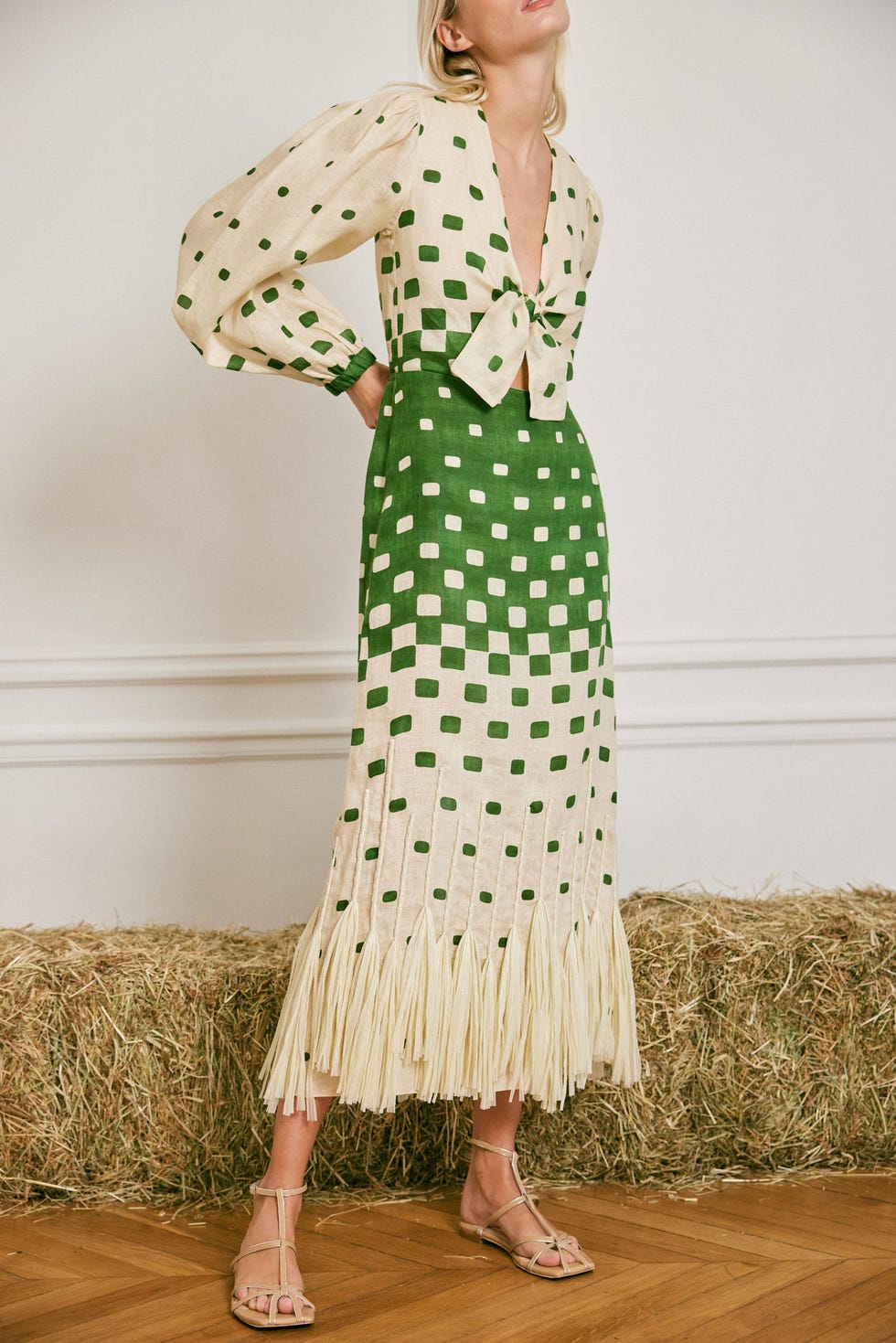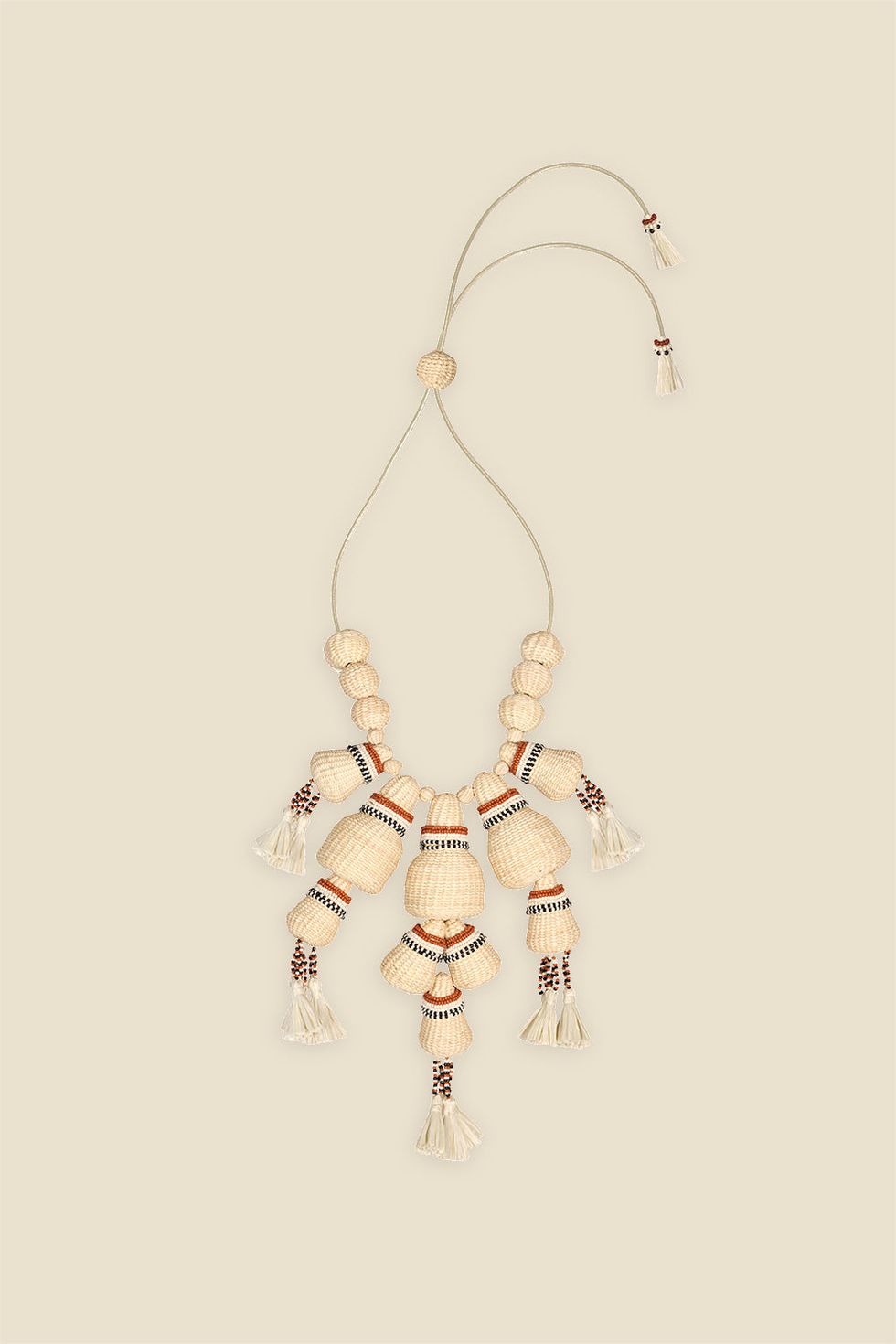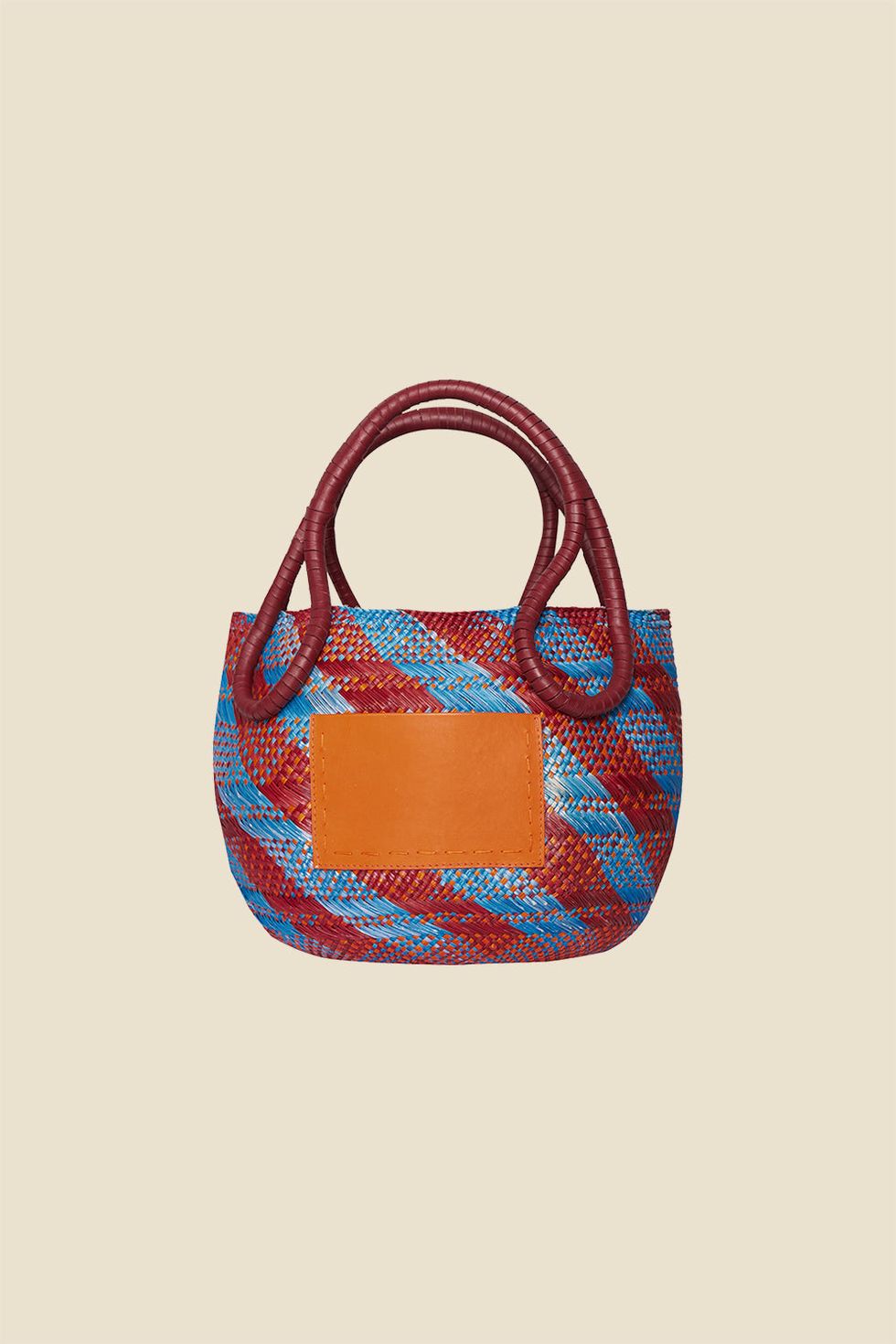Ever since she was discovered by Lauren Santo Domingo nearly a decade ago, Johanna Ortiz has been the go-to designer for peripatetic swans around the world, amassing a chic posse of devotees with ultrafeminine silhouettes and exuberant tropical prints that perfectly capture their je ne sais quoi spirit. And their migratory patterns: An Ortiz dress is indispensable for summer in St.-Tropez, New Year’s in Cartagena (where Ortiz and Santo Domingo met, having run in the same circles for years), and every geotag hotspot in between. But while sultry South American glamour is a trademark of her collections, which she shows annually in Paris and New York, they have a higher calling than exquisite finery for a life of sybaritic leisure.
Ortiz is a designer very much rooted in her hometown—Cali, Colombia—which is evident not only in her palm leaf motifs but in her fierce loyalty to its people. Even though her business has grown astronomically since her debut on Santo Domingo’s Moda Operandi, Ortiz has kept her production in Cali, which is also where she lives with her husband and three sons. “I really love my work,” she says. “But doing this is not only for me to create something and give it to the world. It’s to give back to my city and where I grew up.”
How do you commit to making everything in a country where few people have any training in the luxury trade? Build it yourself. “There were a lot of women who knew how to sew, but in Colombia we’ve never had a proper fashion house where they would have been taught how to do a French hem or work with silk, so it was quite challenging,” says Ortiz, who started her label in 2003, designing swimsuits and resortwear for family friends.
In the beginning she had one seamstress, Flora, who is still with the company. Today Ortiz employs 460 artisans, many of whom have been trained in-house. In 2016 the designer expanded on her founding mission with Escuela Johanna Ortiz, an intensive six-month training program (no experience required) that teaches women and men of all ages—many from vulnerable communities affected by poverty, violence, civil strife, and political unrest—sophisticated couture techniques like embroidery and pattern-making. “It’s not just about nice clothes for beautiful women who can afford it,” Ortiz says. “It’s about the people involved, and how they give a little bit of their heart to make the dream happen.”
Twenty students are accepted per term and treated like full-time employees: They are paid a salary, get free transportation, and have access to mental health services. Everyone receives an official certification from SENA, the National Training Service, and is offered a job at Johanna Ortiz. They also design a sustainable capsule collection using repurposed fabrics, and the school receives the net sales proceeds.
“We want them to change their lives, to feel valued, heard, and productive,” Ortiz says. “It’s not magic, it’s just trying to open doors. That feeds my soul more than the best review.”
This story appears in the November 2023 issue of Town & Country.
SUBSCRIBE NOW
Editor
Leena Kim is an editor at Town & Country, where she covers travel, jewelry, education, weddings, and culture.
Credit: Source link




